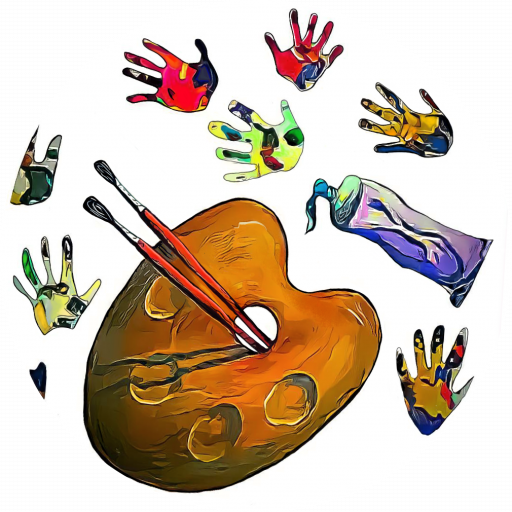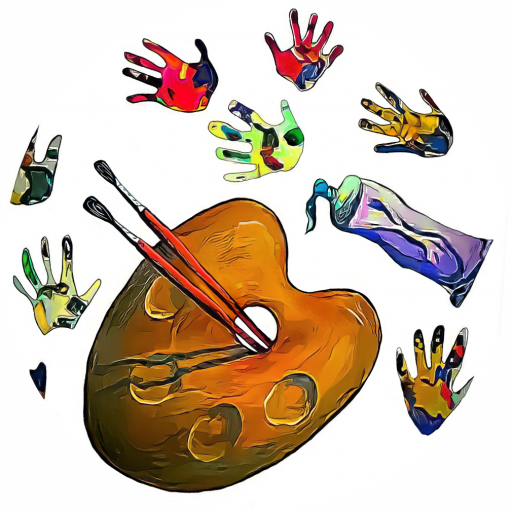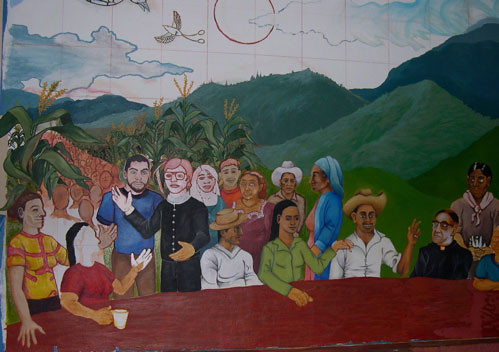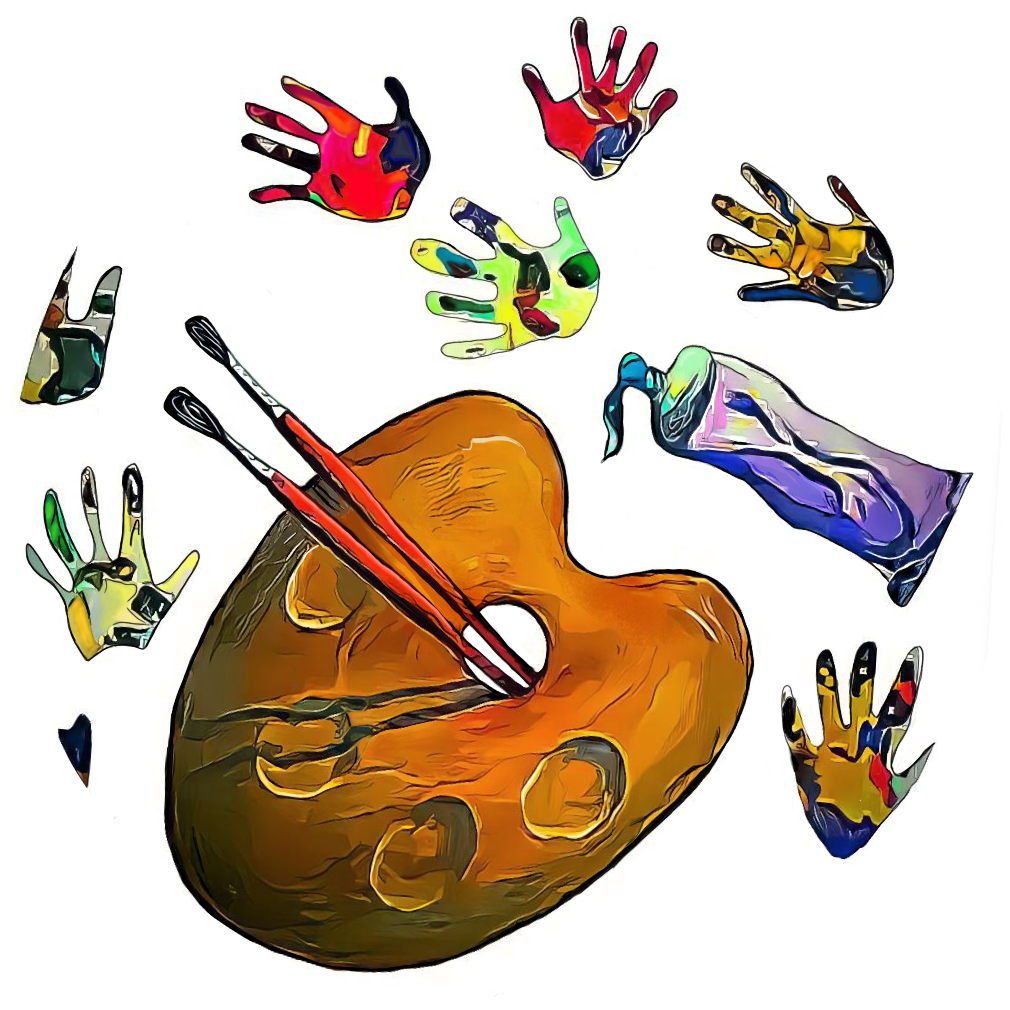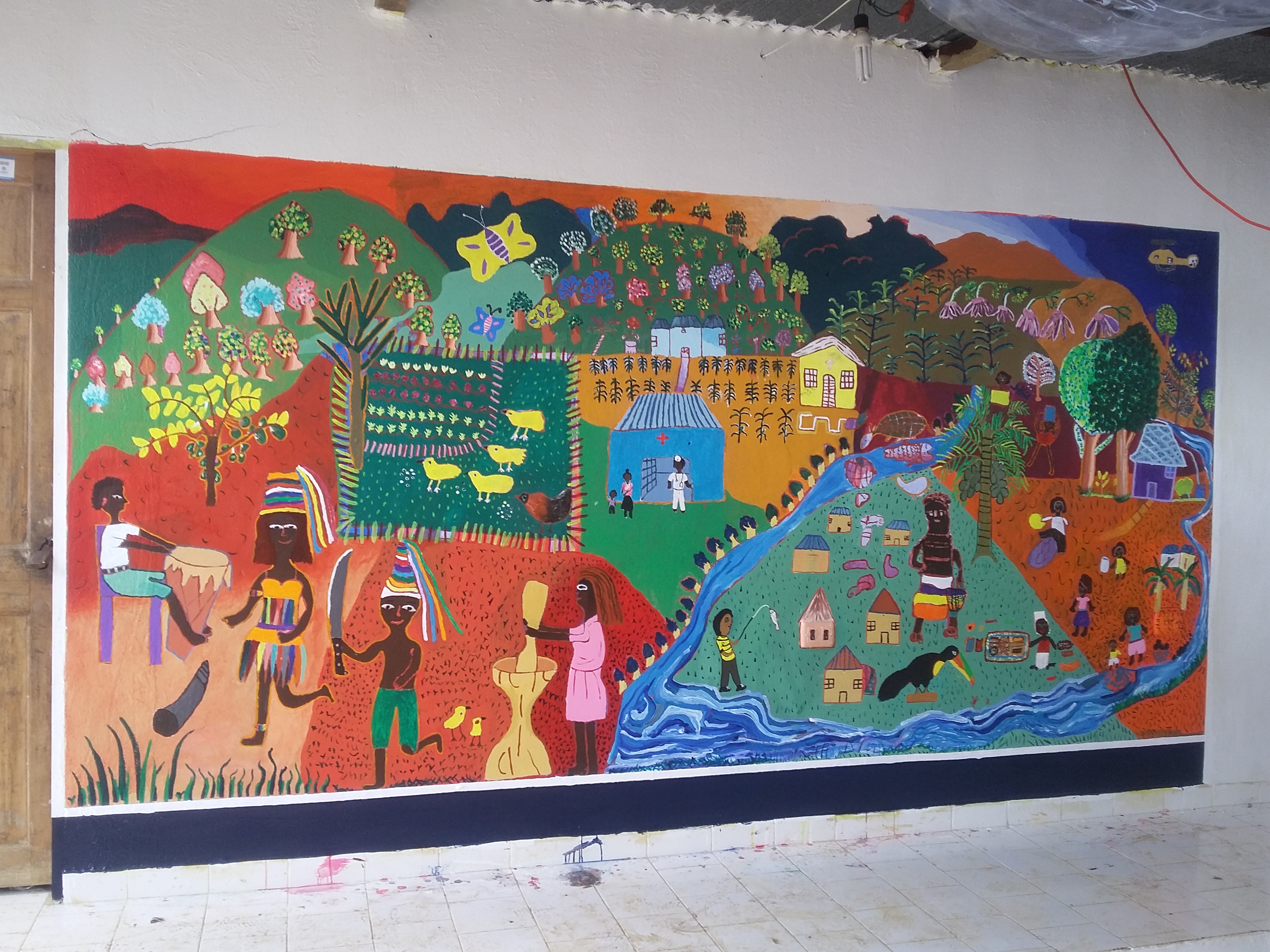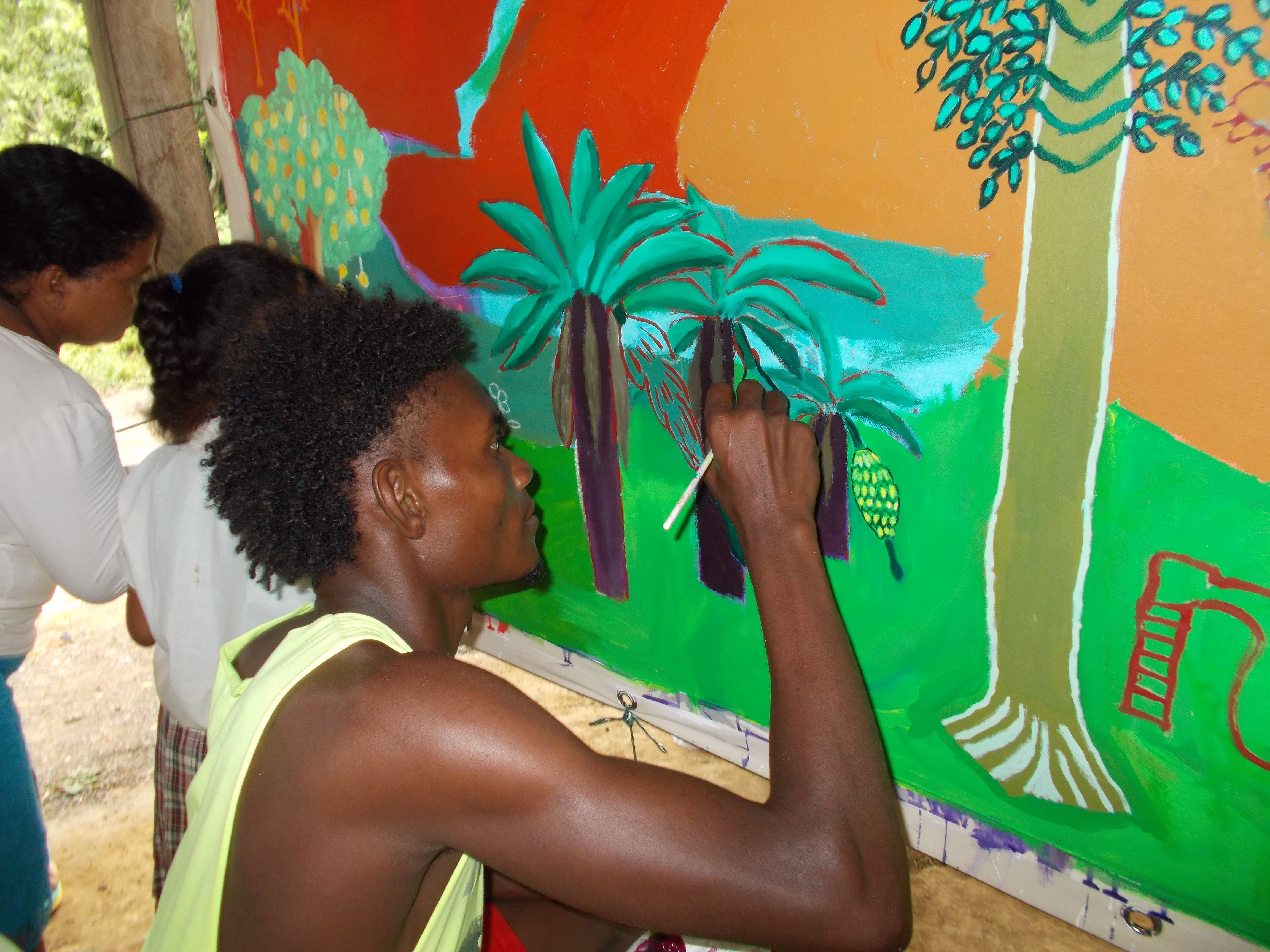Walls of Hope is an international art and human rights project of art, education, conflict resolution, crime prevention, diplomacy building, community development and preservation of historic memory that has been successfully implanted in many regions in El Salvador, as well as in Guatemala, Colombia, México, Argentina, Canadá, Switzerland, Germany, Northern Ireland, and the United States.
As part of the Art and Human Rights Festival, DAH Teatar invited me to develop Walls of Hope Belgrade. Between June 19-24, 2023, twelve artists-participants, ages 14 to 68, from Serbia, Russia, Montenegro, and Belarus gathered at Silosi to create a collaborative and community-based mural.
To create a collaborative mural, the participating artists agree to relinquish a personal and individual idea or vision, on behalf of a common theme. My role as the project director/ facilitator is to ask questions that will serve to find a shared and collective thread of intention that will guide the development of the composition of the mural.
When I asked if this mural would have past, present, and future, the artists gravitated to represent an “ongoing” present, a fluid of time rendered as a river that starts beyond the left limit of the mural, transits the entire extension of the mural and exits beyond the extreme right giving the visual illusion that the river, as well as time and history, is in constant movement.
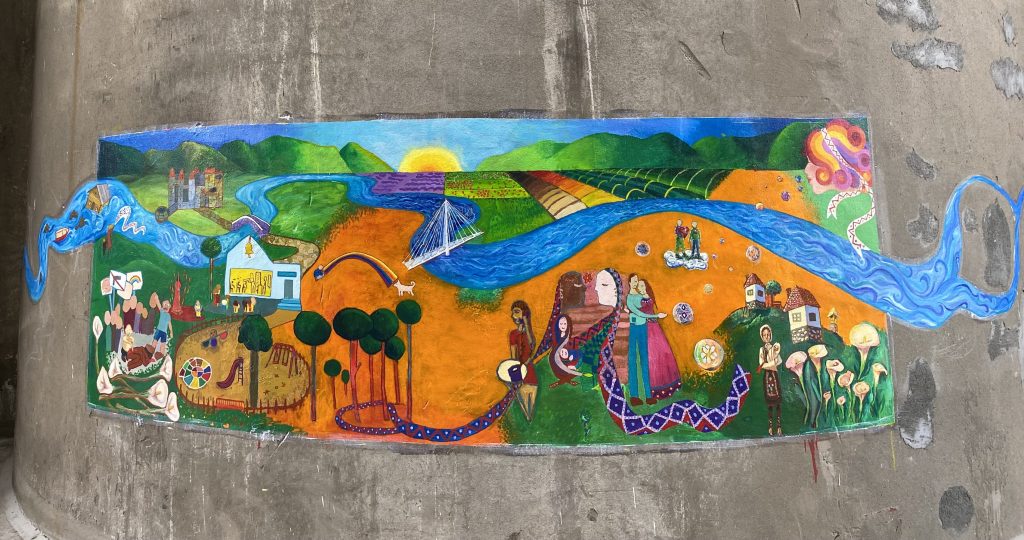
Calla lilies, symbol of beauty and compassion, can be found on the lower left and right of the mural. The calla lilies in the left corner are depicted horizontally, latent, and sad, as they witness a scene of violence and discrimination. There is a castle that stands unharmed containing and representing the history of many people. Adjacent to a school, there is playground where children are not playing. A woman holding a scale that symbolizes the struggle to achieve balance between good and bad, violence and peace, kindness, and aggression. There is silence and confusion as the mural continues to the right transiting through a beautiful forest. Above the forest, a person connects through a rainbow with a dog, manifesting respect, and love to animals.
The Ada Bridge, a cable-stayed bridge over the Sava River, portrays a message of current history and identity since it is a recognizable Belgrade landmark. Most importantly, however, is the fact that the bridge is connecting an area of violence and sadness to the opposite shore in which a young woman that is making an urgent call is surrounded by a scene of compassion. Two faces of different races, look at each other with understanding, a man and a woman hug each other in tenderness, a mother and a child look at a non-gender-specific couple above a cloud, holding a heart to show tolerance.
Delicate, beautiful textiles with patterns that identify history and provenance, embrace the scene as the mural transits to the right showing a woman in typical garments by a group of houses. The calla lilies appear once more in the lower right of the mural, this time flowering safely, beautifully, growing healthy and expanding in a lovely garden of hope.
Towards the extreme left of the river, a precarious house, unstable but committed to remain afloat is accompanied by an empty boat. Beneath the boat, on shore, a mother and a child hold a bandana with recognizable designs that identify the presence of the varied social identities of people living in Serbia today. The river transits underneath agriculture and plantations, ending in a profile of a young woman with rainbow hair and an embroidered head textile. The river extends to the right in its relentless journey.
This mural was accomplished by artists who were willing and able to find a way to converse first, and paint later, about their fears, their worries, their personal and communal histories, their plural and varied identities, and about hope.
Hope is elusive, fragile, and fugitive. Yet, it is by holding to a common hope that we may attempt to find coincidences and understanding.
I want to extend my deepest thanks and admiration to each and all the participating artists.
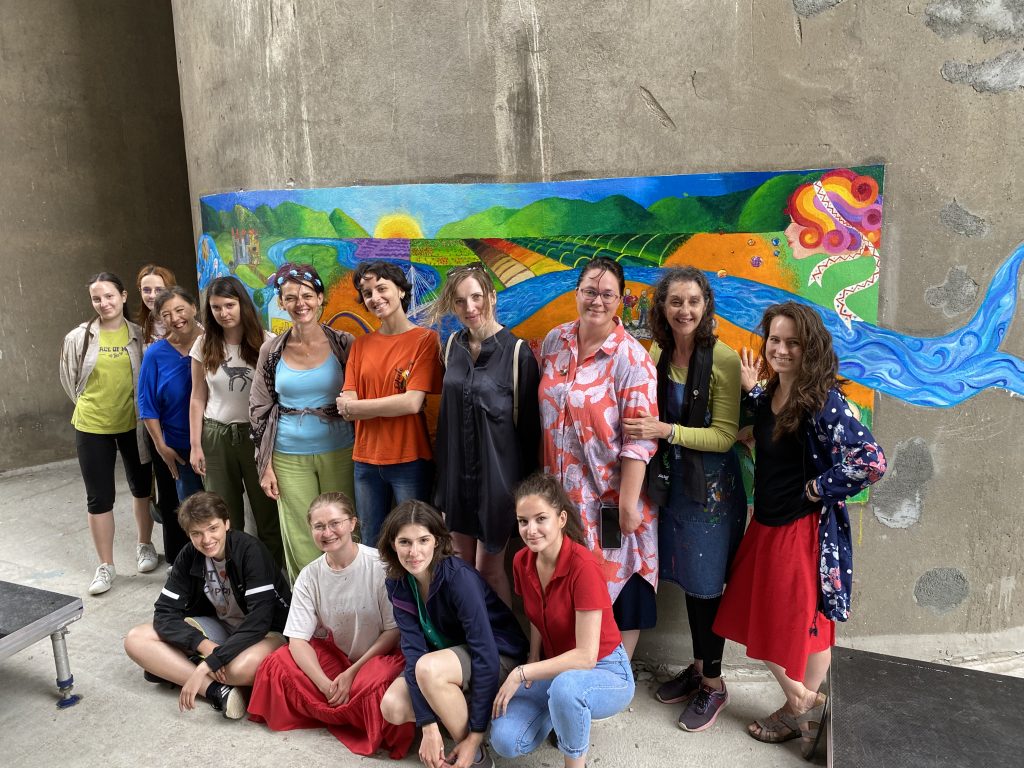
The participating artists and I want to express our dear thanks and appreciation to Anastasija Cetkovic who welcomed the mural at Silosi.
Thank you, DAH Teatar, for making this project possible.
Claudia Bernardi
Project Director/ Facilitator
Walls of Hope – School of Art & Open Studio Of Perquin
Walls Of hope · An international art and human rights project Of education, conflict resolution, crime prevention, diplomacy building, community development and …
